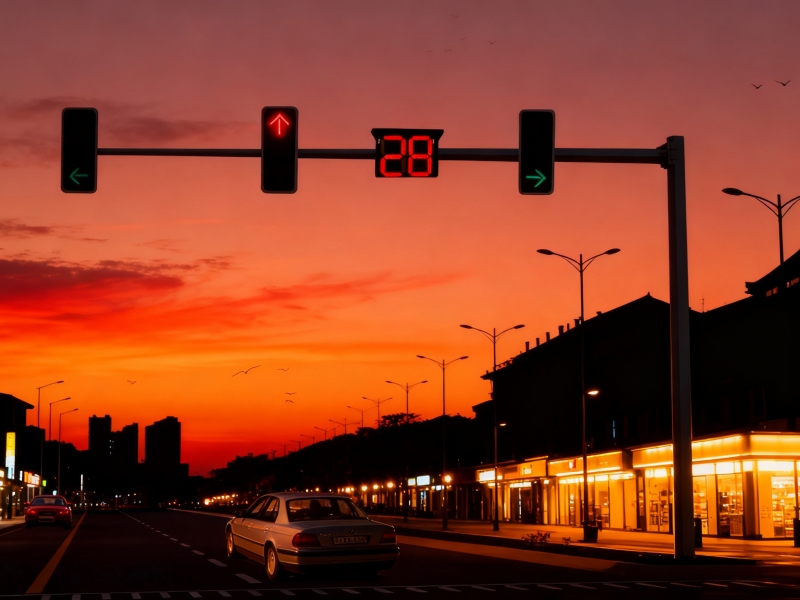The installation location of a traffic light pole is far more complex than simply inserting a random pole. Every centimeter of height difference is driven by scientific safety considerations. Let’s take a look today with municipal traffic light pole manufacturer Qixiang.
Signal Pole Height
The height of the signal directly determines whether traffic participants can clearly see the signal. The national “Road Traffic Signal Light Setup and Installation Specifications” strictly distinguishes between these two aspects:
Motor vehicle signal lights: Cantilevered installation heights of 5.5 to 7 meters ensure clear visibility to drivers from a distance of 100 meters. Pole-mounted installations require a height of 3 meters or higher and are primarily used on secondary roads or at intersections with low traffic volume.
Non-motor vehicle signal lights: The optimal height is 2.5 to 3 meters, at eye level for cyclists. If mounted on a motor vehicle pole, the cantilever must extend above the non-motor vehicle lane.
Pedestrian crossing signals: They must be lowered to 2 to 2.5 meters to ensure visibility for pedestrians (including children and wheelchair users). For intersections wider than 50 meters, additional signal light units should be installed at the exit.
Signal Pole Location
The choice of signal pole location directly impacts signal coverage and visibility:
1. Roads with mixed traffic and pedestrian traffic
The signal pole should be located near the intersection of the curb, preferably on the right sidewalk. For wider roads, additional signal units can be added to the left sidewalk. For narrower roads (total width less than 10 meters), a single-piece signal pole can be placed on the right sidewalk.
2. Roads with separate traffic and pedestrian lanes
If the median width permits, the signal pole should be located within 2 meters of the intersection of the right sidewalk with the traffic and pedestrian lane edge. For wider roads, additional signal units can be added to the left sidewalk. If the median is too narrow, the signal pole should revert to the sidewalk.
Iron Rule: Under no circumstances should signal poles occupy the blind path!
Even if the height requirements are met, traffic lights may still be obstructed:
1. No trees or obstacles higher than the bottom edge of the light may be located within 50 meters of the light.
2. The signal light’s reference axis must be unobstructed within a 20° radius.
3. Confusion-causing light sources, such as colored lights or billboards, are strictly prohibited from being placed behind the light.
Traffic sign layout and location regulations and restrictions are as follows:
Location: Generally located on the right side of the road or above the roadway, but may also be located on the left or both sides, depending on the situation. Warning, prohibition, and instruction signs should not be placed side by side. If placed side by side, they should be arranged in the order of “prohibition → instruction → warning,” top to bottom and left to right. If multiple signs are required at the same location, no more than four should be used, and each sign must have sufficient space.
Layout Principles: Information should be continuous and uninterrupted, and important information may be repeated. Sign placement should be integrated with the surrounding road network and traffic environment and coordinated with other facilities to ensure visibility. Signs should avoid obstruction by trees, buildings, and other structures and should not infringe upon road construction limits. Special scenarios: Signs on highways and urban expressways must comply with the “Road Traffic Signs and Markings” standard and provide clear information. Signs on special sections of road, such as tunnels and bridges, must be tailored to the spatial characteristics and ensure visibility.
Post time: Oct-21-2025







